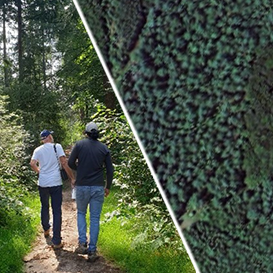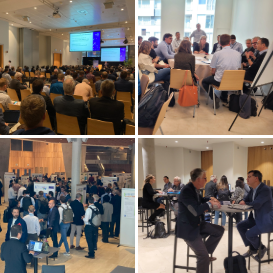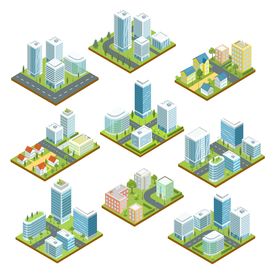
Focus on Canada
Ten years of successful collaborations through ITEA
For over 75 years, the National Research Council of Canada Industrial Research Assistance Program (NRC IRAP) has been providing Canadian small and medium-sized enterprises (SMEs) with access to funding, advisory services and connections that help them develop innovative technologies and drive business growth. 2024 also marks the tenth anniversary of Canada’s participation in ITEA; in that time, more than 70 Canadian partners have participated in over 30 projects valued at approximately 51.4 million euros of investment. Vance Pan, Industrial Technology Advisor at NRC IRAP, outlines how the software landscape and national priorities of Canada align with ITEA.
A great deal to offer
As the Canadian Program Lead for Eureka ITEA, Vance provides Canadian organisations with a first contact point in ITEA’s global network. “From our perspective, Canadian SMEs are the backbone of the economy and the main drivers of our industrial innovations,” he begins. “As Canada’s leading industrial innovation programme for SMEs, NRC IRAP provides direct support to Canadian innovators with plans to expand internationally. We do this by identifying opportunities for them to grow through international collaboration programmes like ITEA, which provide companies with the funding and services they need to access new markets and global value chains.”
In turn, Canadian partners have a great deal to offer: ICT is a top-three industry in Canada and accounts for approximately 7% of GDP. “The software subsector makes up the bulk of the ICT sector,” Vance continues. “It accounts for over 90% of the more than 43,000 companies operating in the Canadian ICT sector. Technologies like AI, quantum computing, big data analytics, IoT and cybersecurity anchor growth in this sector and impact the overall economy. The sector is also responsible for employing approximately 1.4 million people, which represents more than 6% of the total workforce. Quite clearly, the ICT sector – and specifically software companies – play a critical role in both the economy and Canadian society today.”
It’s important to point out that Canada’s participation gives international partners access to world-class software talent in Canada and provides them with an entry point into the North American market.
Transformative technologies
In addition to SMEs, Canada’s software innovation ecosystem consists of large firms, academia, industry-focused research centres, venture capital investors, incubators, accelerators and a broad spectrum of government policies and programmes to support this ecosystem. Among these programmes, the Canadian government funds advanced academic research, provides training for knowledge workers and offers tax incentives, grants and contributions to help offset the costs of R&D activities.
“The goal of this ecosystem is to advance transformative technologies that will support a technologically advanced economy and accelerate the transition to a more digitally enabled society in Canada,” explains Vance. “One example is Canada’s role in the advancement of artificial intelligence over the years. For the software industry in Canada, this is probably the most important topic at the moment. Canada was the first in the world to introduce a national AI strategy back in 2017 with the first phase of the Pan-Canadian Artificial Intelligence Strategy. This focused on developing strong industrial research competencies, a talent pipeline and a national ecosystem. Since the implementation of that strategy, we have established three national AI research institutes across the country, more than 50 multinationals have set up AI R&D labs in Canada, and hundreds of AI startups have been launched in the last few years. With a maturing national AI ecosystem in place, we expect both the commercialisation and adoption of AI innovations to increase significantly over the next few years.”

Canada is celebrating an important milestone this year as co-chair of Eureka with Germany for 2024-2025. This is the first time in Eureka’s almost 40-year history that two countries are sharing the responsibility of leading the network. The National Research Council of Canada (NRC), in collaboration with Germany’s Federal Ministry of Education and Research (BMBF), will help set the strategic direction for Eureka, and continue to support efforts to enhance cooperation across the network. Innovators and partners from across the Eureka network will also have the opportunity to visit Canada and experience its vibrant innovation ecosystem of growing companies and world-class research institutions.
For more information, please visit the website www.eureka2024-25.com
Time-tested approach
As Vance notes, Canada’s increased focus on AI follows a similar pattern taking place within ITEA. “In the last two years, we’ve seen a significant rise in ITEA projects that have an AI focus. Some of these are pure AI projects, like the GENIUS project from ITEA Call 2023, which is all about generative AI. If you look back three or five years, AI would have been a smaller component of the overall project. But now, it’s basically everywhere. Given that Canada was ahead of the curve on AI, NRC IRAP is encouraging Canadian SMEs to lead ITEA projects and bring more Canadian partners into these types of collaborations. In doing so, Canadians can drive the vision of projects and showcase Canadian technologies and innovative ideas to the world – not just regarding AI, but across the software spectrum.”
These efforts are bearing fruit. Canadian SME Kelvin Zero is currently leading the Secur-e-Health project, which brings together 30 partners across five countries to take health data out of silos so that healthcare providers can better collaborate. Canadian partners also played key roles in the ITEA projects SMART and INNO4HEALTH, each of which received an ITEA Award of Excellence 2024 at the most recent PO Days for their respective work of addressing urban traffic congestion challenges and chronic disease management.
“The Eureka Clusters programme, including ITEA, applies a time-tested approach to transnational collaborations. The bottom-up projects are led by industry, with participants who are trusted and engaged, with well-defined and effective processes,” says Vance. “We recognise that these projects create valuable long-term partnerships while creating commercial and social impact. While the United States is Canada’s main trading partner and the primary export market, Canada also recognises that other global markets offer significant growth opportunities for Canadian SMEs. NRC IRAP’s international programmes are designed to help them connect with and benefit from markets beyond North America, and Eureka is at the core of this initiative.”
Continued collaboration
While time zones can provide a challenge – especially when working on a project with partners in Canada, Europe and Asia – Vance believes that Canadian participants consider the benefits of ITEA to far outweigh the costs. “Over the years, more and more Canadian SMEs are starting to see the value of international collaboration and are taking advantage of ITEA. From the perspective of Canadian partners, the opportunities and benefits of Eureka are not just for Canadians. It’s important to point out that Canada’s participation gives international partners access to world-class software talent in Canada and provides them with an entry point into the North American market. The Eureka ITEA Office is doing excellent work helping to promote the programme and raising awareness, as Canada welcomes continued co-innovation opportunities with partners all over the world.”
More information:
https://nrc.canada.ca/en/support-technologyinnovation/eureka

Other chapters
Use the arrows to view more chapters

Editorial
By Dirk Elias and Régis Cazenave

Country Focus: Canada
Ten years of successful collaborations through ITEA

Kelvin Zero
Taking health data out of silos with Secur-e-Health

ITEA Success story: OPTIMUM
Offering greater efficiency, safety and usability in future smart factories

Community Talk with Erik Rodenbach
Running a well-oiled machine

SME in the Spotlight: D-SIMLAB
Simulation support for semicon and aerospace

End user happiness: Deep4Sat43
Satellite technology enhancing forest health

ITEA PO Days 2024 and exhibition
Active ITEA Community delivers a record number of ideas

ITEA Success story: BIMy
An innovation engine for integrated BIM and GIS

